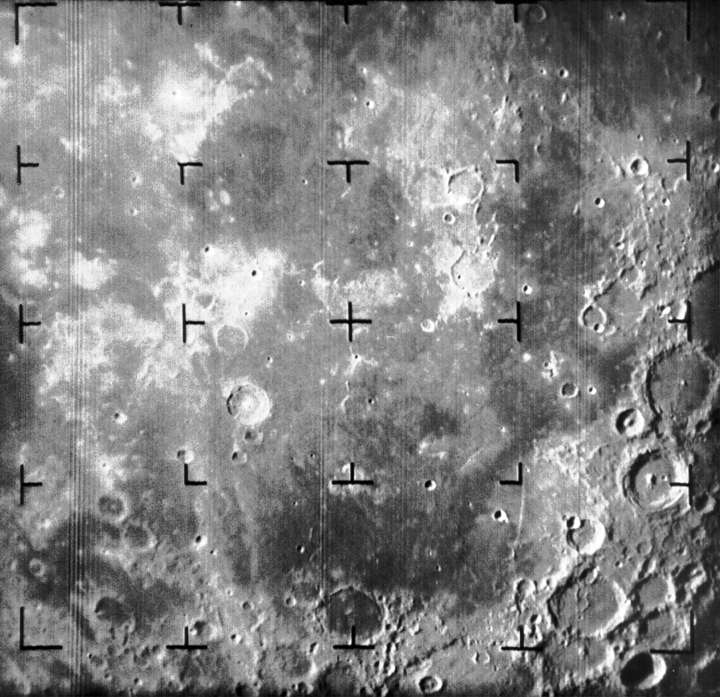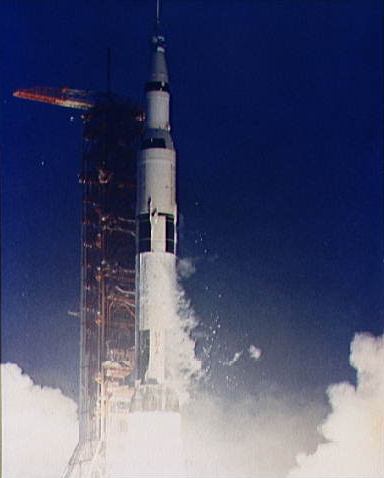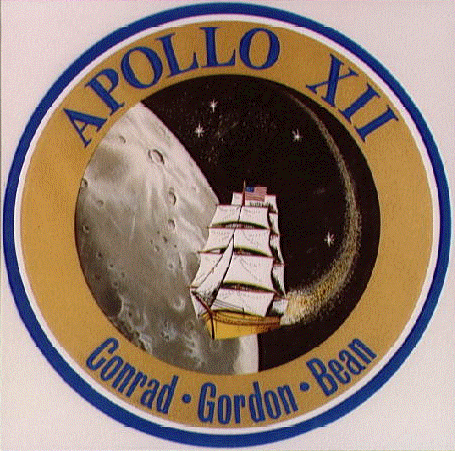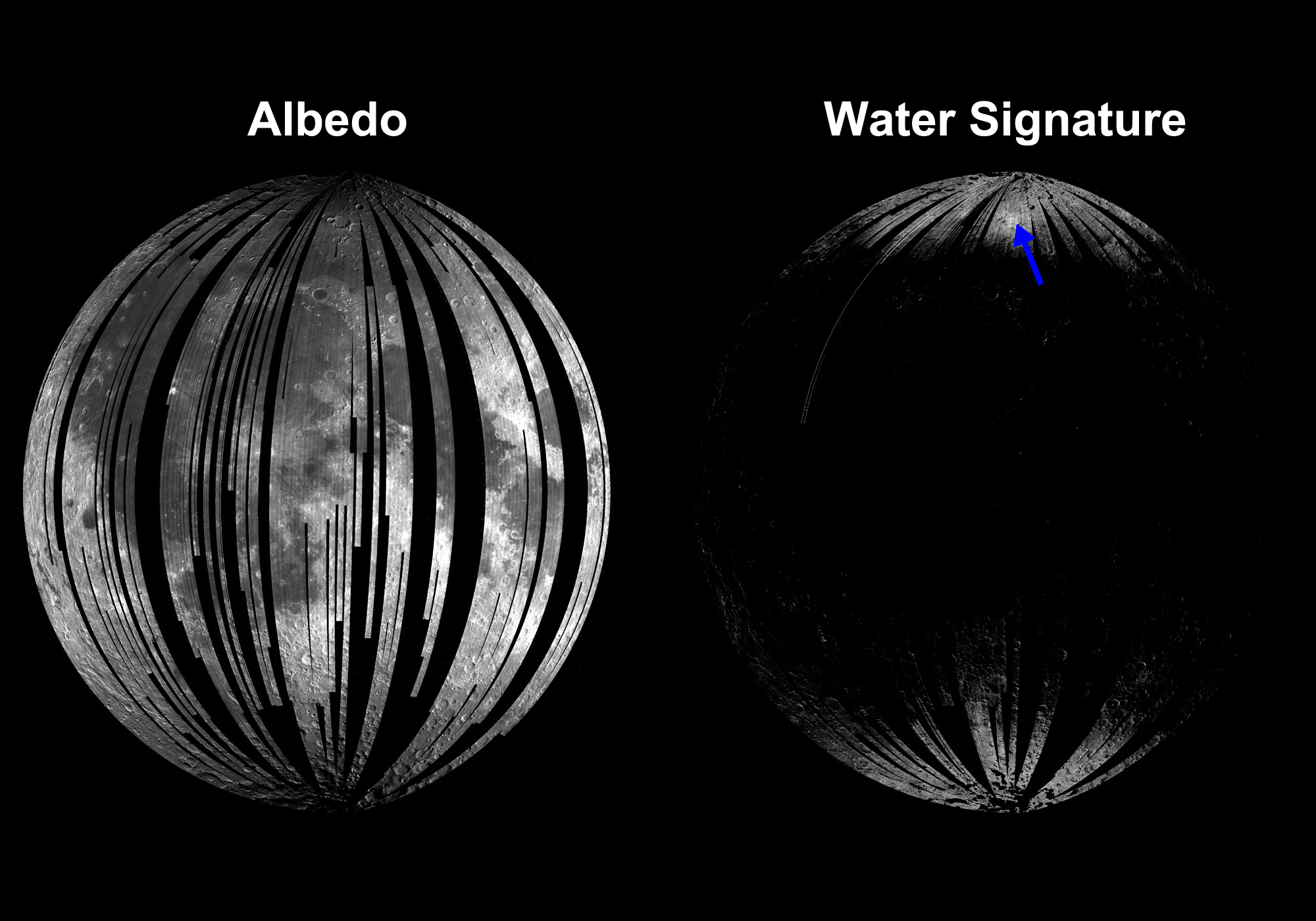Forty five years ago today — March 21, 1965 — the lunar probe Ranger-9 launched from Cape Canaveral on an Atlas-Agena rocket. It was the last of the Ranger series of lunar spacecraft.

(First Ranger-9 image, showing Mare Nubium. NASA image.)
Ranger-9 took over 5800 photographs of the lunar surface before it impacted on the moon on March 24. The first photograph it took (above) was of Mare Nubium, as described below:
The first Ranger 9 image of the Moon, taken with the A camera from a distance of 2378 km. The image is centered on the Mare Nubium region of the Moon, which extends to the bottom of the image. At upper left is southeastern Oceanus Procellarum. The two craters with the central peaks at right are Alphonsus, diameter 108 km, and below it Arzachel, diameter 96 km. The crater near the center at about 8:00 is 60 km Bullialdus. The frame is approximately 1050 km across and north is at 12:30. The final impact point of Ranger 9 is in the Alphonsus crater, midway between the central peak and rim at about 1:30.
Source: Ranger-9 image page.
Mare Nubium, which dominates the lower part of that image, means “Sea of Clouds” — and friends may recall that the novel I’ve been shopping around is entitled WALKING ON THE SEA OF CLOUDS. So I particularly like this bit of space history.













